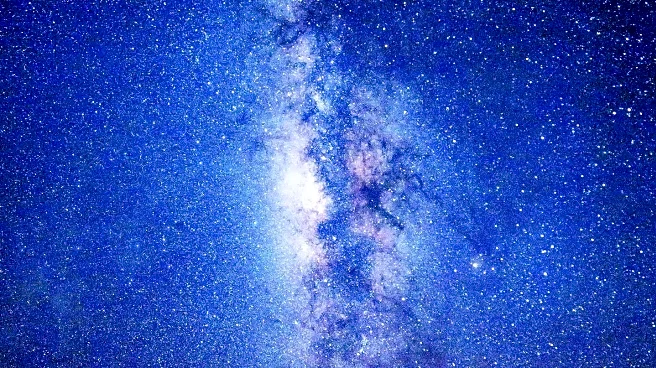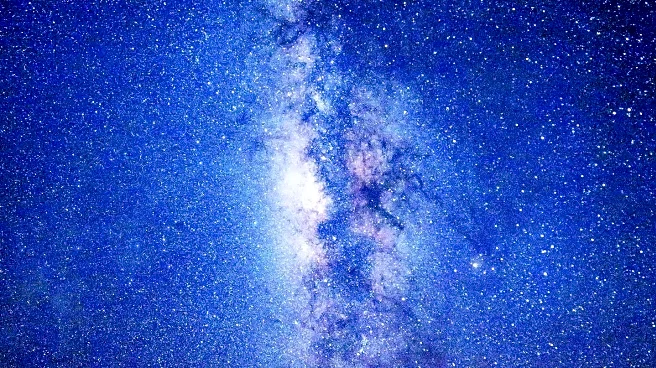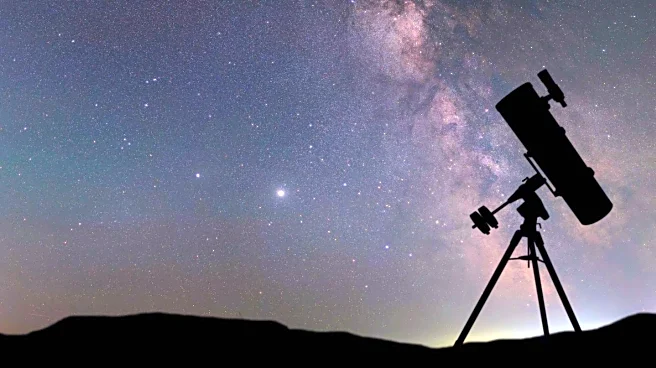What is the story about?
What's Happening?
As the colder months approach, the visibility of the Milky Way galaxy is diminishing, offering a limited window for stargazers in Oklahoma to witness this celestial spectacle. The Milky Way, a spiral galaxy containing billions of stars, is best viewed during the warmer months. However, as fall transitions into winter, the opportunity to see the galaxy's center becomes more challenging. Despite this, southern states like Oklahoma may still have decent views through late September. The optimal conditions for viewing include clear nights, minimal light pollution, and locations far from city lights. The new moon phase beginning on September 21 provides an ideal time for viewing, as the lack of celestial light enhances visibility.
Why It's Important?
The visibility of the Milky Way offers a unique opportunity for both amateur and professional astronomers to engage with the night sky. This natural phenomenon not only provides a chance for scientific observation but also promotes public interest in astronomy and space science. For local economies, particularly in rural areas, stargazing can attract tourism, benefiting businesses such as local accommodations and guided tours. Additionally, the event underscores the importance of preserving dark skies, which are increasingly threatened by urban light pollution.
What's Next?
As the Milky Way season comes to a close, stargazers are encouraged to take advantage of the remaining clear nights for optimal viewing. Local communities and astronomy clubs may organize events or provide resources to help enthusiasts locate the best viewing spots. Efforts to reduce light pollution could gain momentum, with potential policy discussions on preserving dark sky areas. The upcoming new moon phase offers a prime opportunity for those interested in capturing the Milky Way through photography or telescopic observation.
AI Generated Content
Do you find this article useful?
















